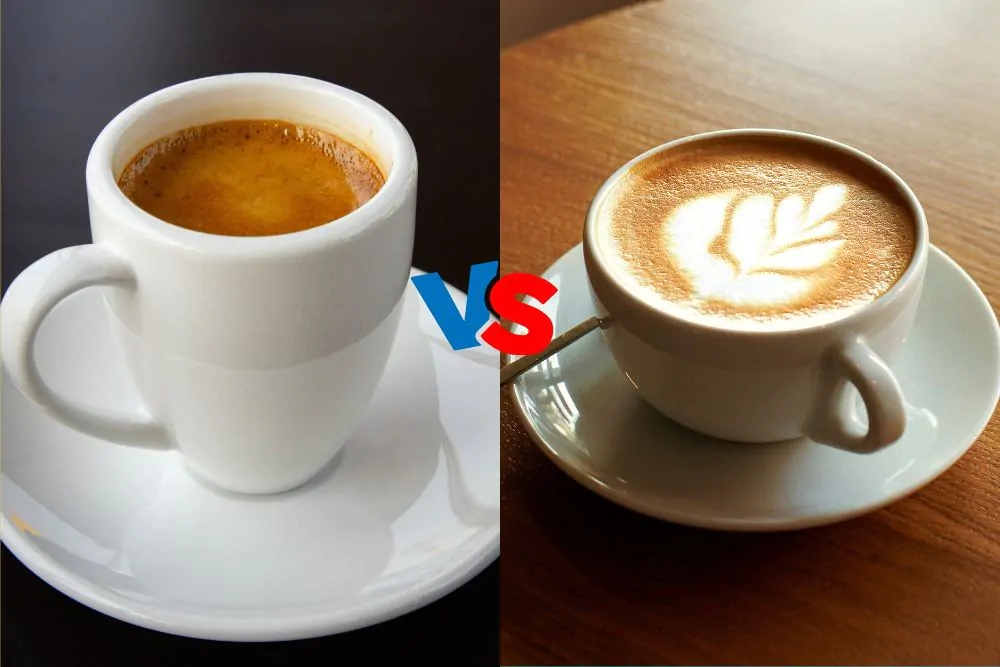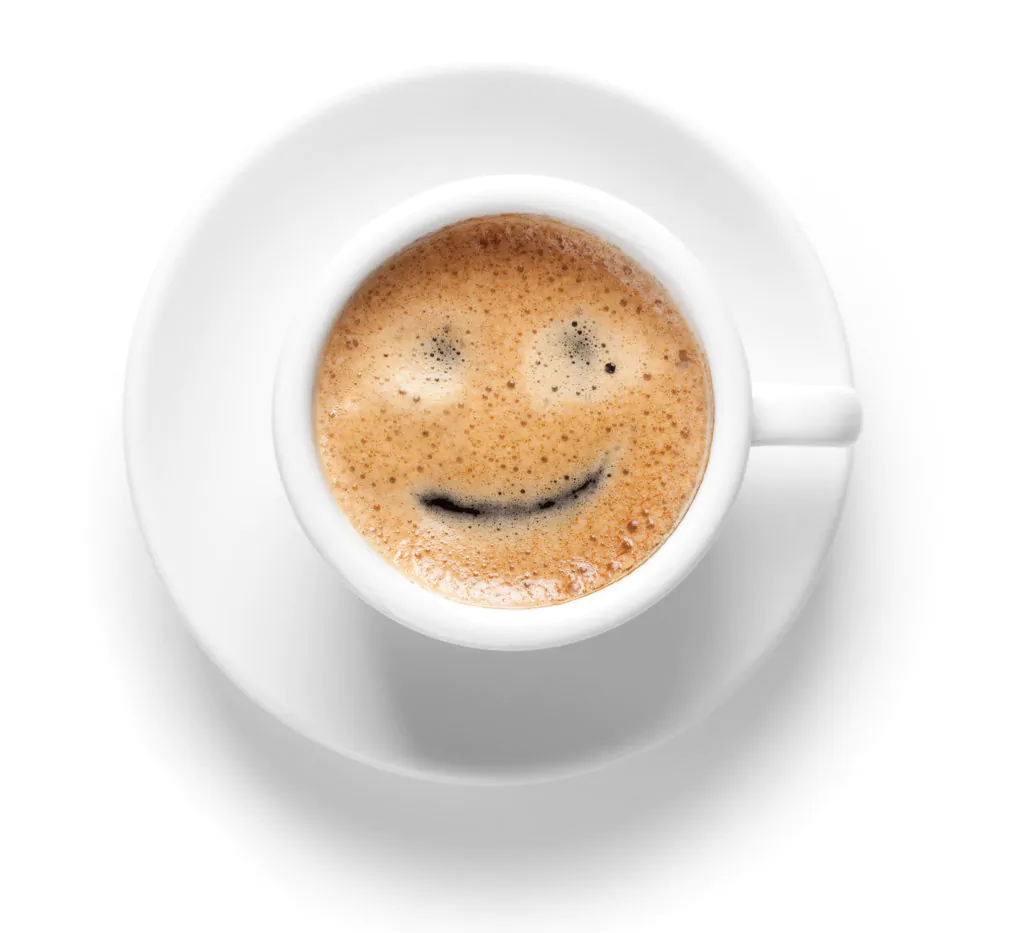
Espresso vs. cappuccino – every coffee aficionado knows the difference between espresso and a cappuccino. But which is better? Some say the milk in cappuccino ruins an espresso’s taste, while others say espresso is too strong.
Today I’ll clear the coffee-scented air by talking about their differences, similarities and revealing which drink is better.
Let’s dive in and learn more about espresso vs. cappuccino
What are Espresso and Cappuccino?
For both drinks, you’ll need an espresso machine or AeroPress to create the base.
What is an Espresso? And How is it Made?
Espresso is made by forcing high-pressured hot water through tightly packed grounds called a puck. This normally takes 25-30 seconds and results in a strong shot of black coffee.
The main difference between espresso and cappuccino is that an espresso stops here. You can add some sugar if the espresso is too strong, but be careful not to add too much since the espresso’s point is to taste coffee, not the sugar.
What Is a Cappuccino and How Is it Made?
Once you’ve drawn a shot of espresso, you can now make a cappuccino. Steam your milk for 30-40 seconds, and you’ll see it thicken and the bubbles disappearing.
You can now pour it on top of your espresso, creating a cappuccino. The key difference between a great cappuccino and an average one is that an average cappuccino stops here.
A great cappuccino is all about balance. It has some airy milk foam on top of the frothed milk making it ⅓ espresso, ⅓ frothed milk, and ⅓ airy milk foam. Since a cappuccino is such a structured drink, you can feel the weight in your hand when you drink it.
Espresso vs. Cappuccino: The History Behind These Drinks
Espresso
The word espresso refers to how the flavor is extracted from the grounds and how fast it’s made. Espresso became popular in Italy during the late 19th century and early 20th century when espresso machines became widespread and easy to manufacture.
And after WW2, espresso and espresso-related drinks like the Americano became popular in the United States, the United Kingdom, and other Western countries.
Cappuccino
The history of cappuccino is shared between Italy, Germany, and Austria. The recipe first appeared in an 18th-century German publication. At the time, it was called “Kapuziner Koffee.”
The rise in popularity of the espresso machine also gave rise to the cappuccino. And in the 1920s, the cappuccino became a famous breakfast drink for most Italians.
Espresso is All About The Crema

Crema is that reddish, flavorful froth you see sitting on top of your espresso shot. Crema is commonly thought to indicate an experienced barista and high-quality coffee beans that are ground well.
It also gives the espresso a longer aftertaste than a cappuccino. Too much crema, and you’ll have less espresso. That’s why skilled baristas often aim for a 1:10 crema to espresso ratio.
Factors That Affect Crema
Generally, the darker the bean, the less crema it will form because of oils rubbing off when the bean is handled. However, this doesn’t mean that light roasts will form a better crema.
Most coffee shops actually prefer darker beans because they contain the perfect amounts of oils.
Espresso machines sold for home use often have automatic controls, which can affect crema production. Freshly roasted beans also form more crema.
Cappuccino is All About Balance
The ratio of espresso to frothed milk to foam must be 1:1:1. Commonly you’ll find that low-quality, high-volume coffee shops will serve ⅓ espresso and ⅔ frothed milk. This gives the cappuccino a latte-like feel.
To solve this problem, ask the barista to add less froth milk and more foam. This will give your cappuccino the classic, balanced taste and feel. However, it’s a sweet, rich drink. Learn about the number of calories in a cappuccino.
The Final Word on Cappuccino vs Espresso
If you aren’t a big coffee drinker and you not looking to taste unique notes that are in espresso beans, then a cappuccino is better for you.
But if your mornings are busy and you don’t have time to froth milk, espresso offers a quicker, cleaner caffeine fix, with less sugar. One isn’t better than the other. Everyone has their preferences and reasons for those preferences. Drink both and see which one fits your needs better, then stick to that.
